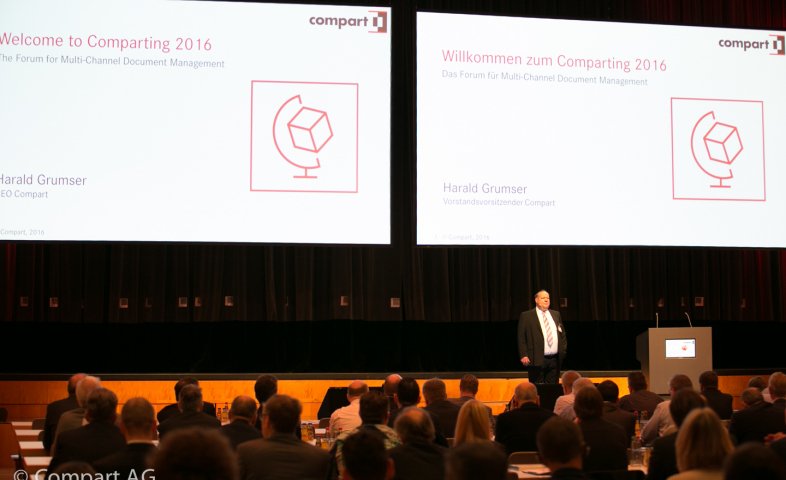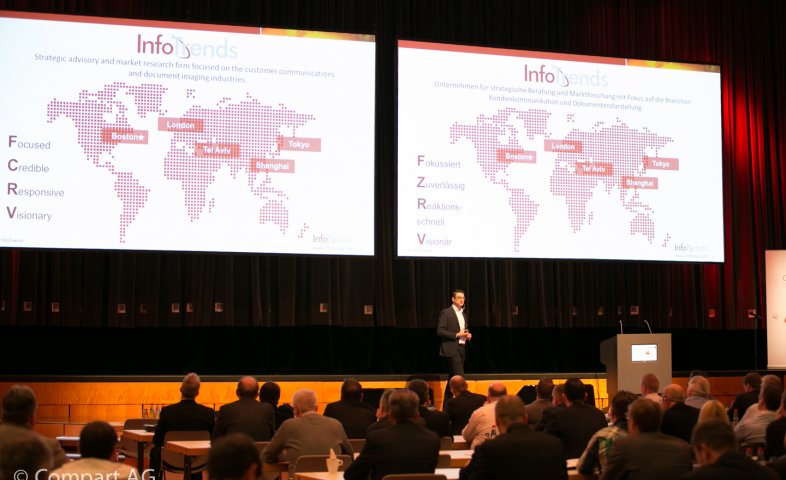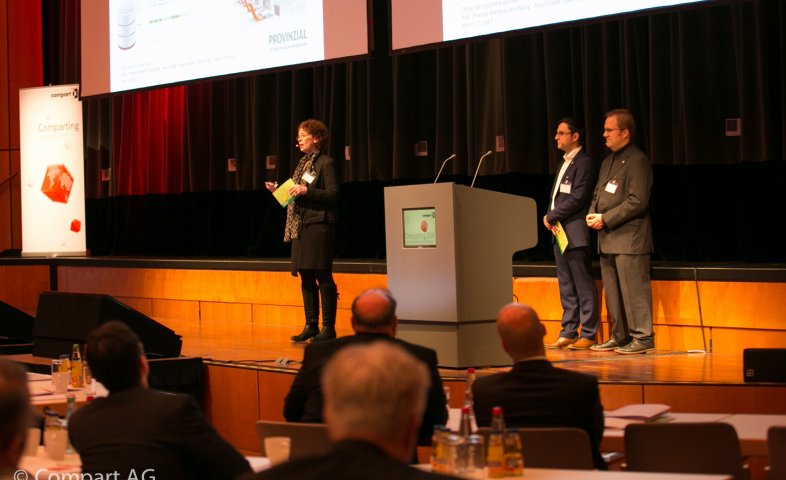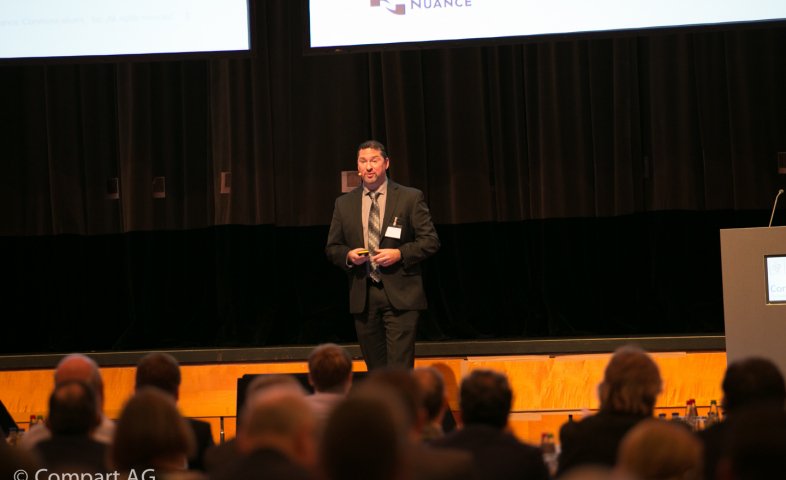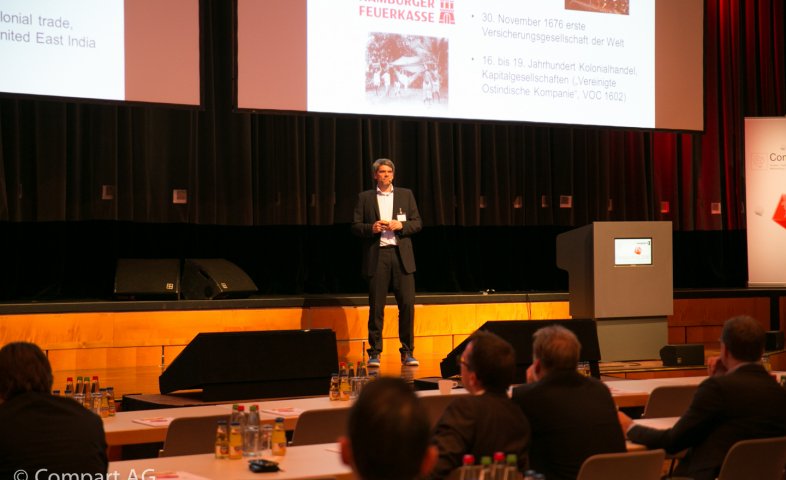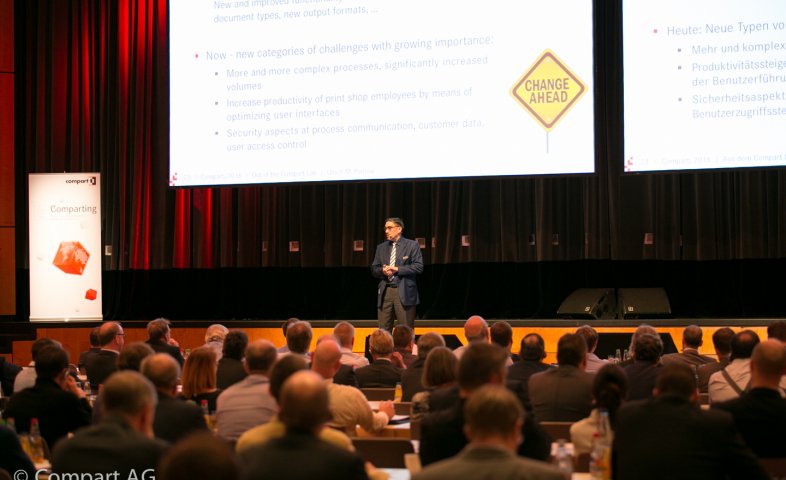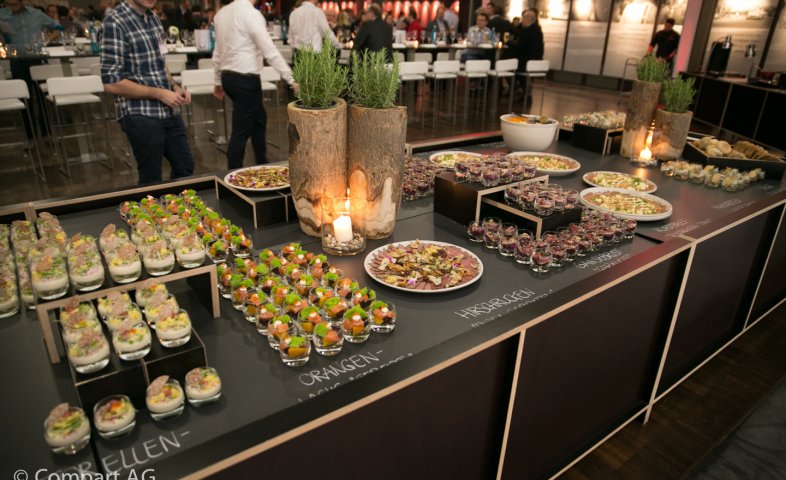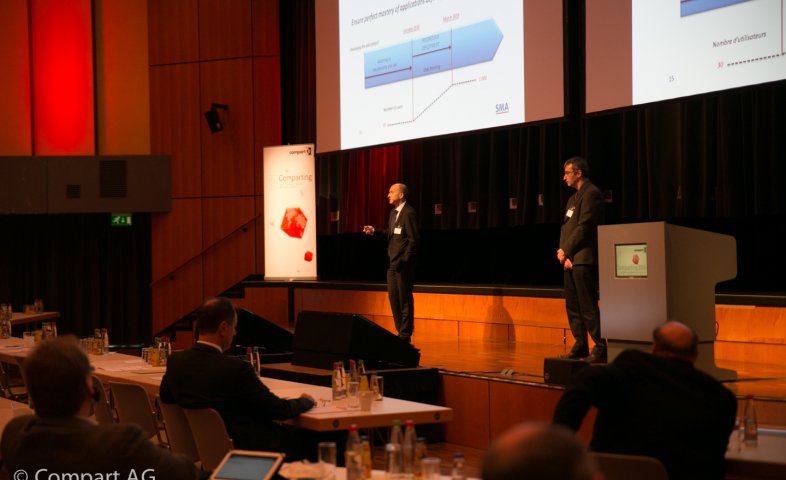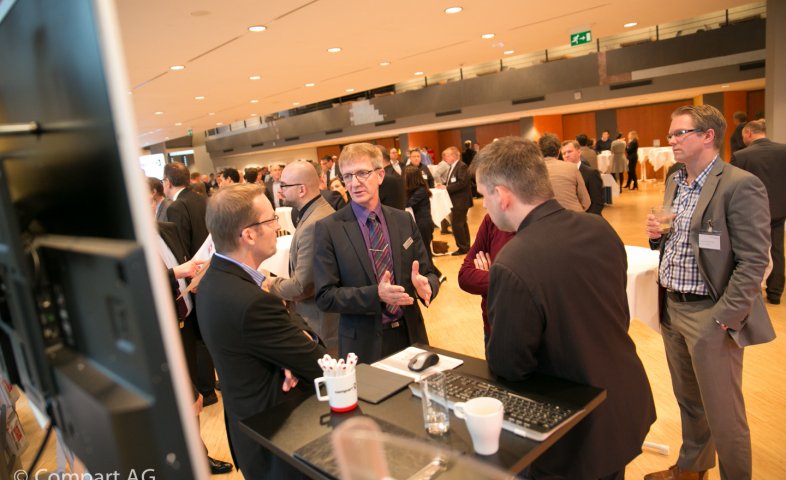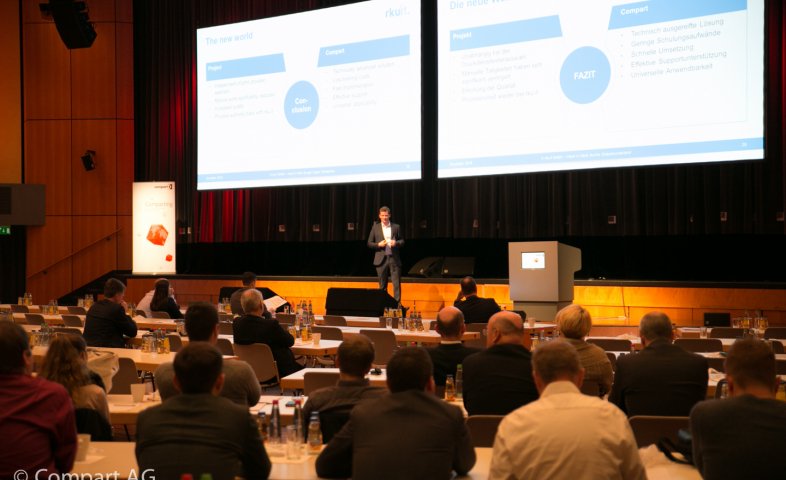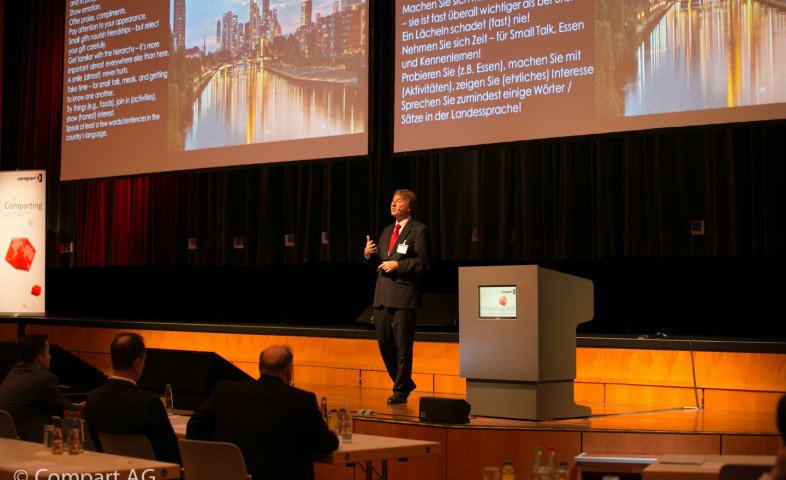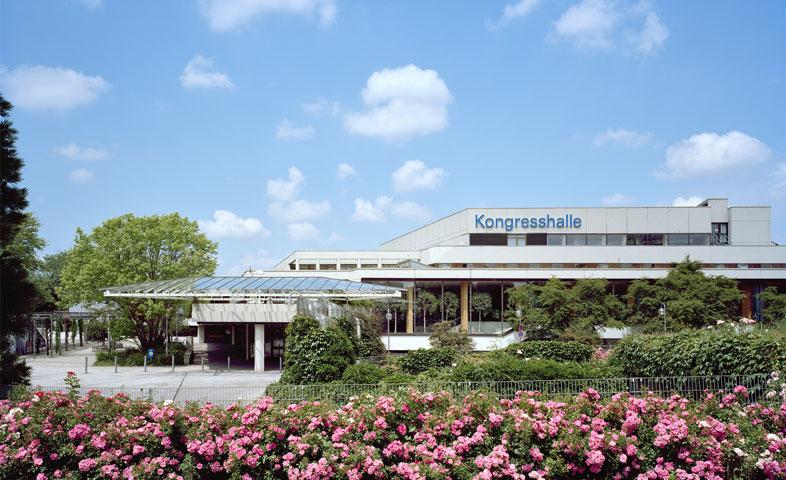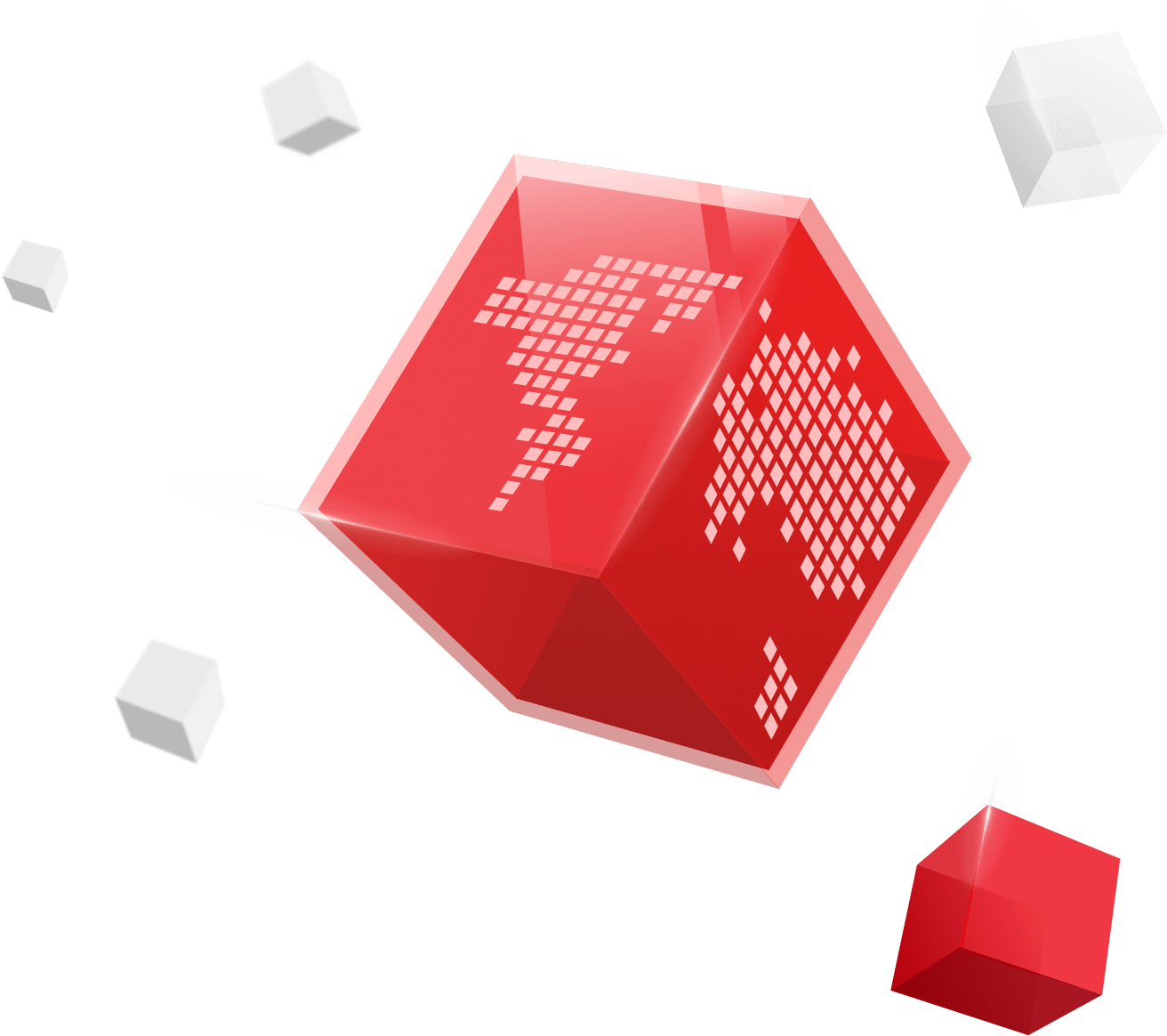
Trends | Technology | Solutions | Networking | Education
Comparting is an annual international forum for Multi-Channel Document and Output Management that attracts many like-minded people who are grappling with similar questions of how to communicate more efficiently and effectively with customers. It is a celebration of this industry as well as an educational event.
Comparting is known for its wide range of topics and the high quality of its technical programs. We will shed light on various aspects of modern document processing and explain how to find considerable potential for optimization.
Multi-Channel Becomes Omni-Channel: Comparting Sets Clear Course for Customer Communication of the Future
12th Forum for multi-channel document management discusses impact of digitization on document processing.
Böblingen, November 18, 2016 – Revolution in Böblingen: For two days the Kongresshalle was a showplace of innovation for 21st century customer communication. The introduction of DocBridge Impress was undoubtedly one high point. The new solution from Compart supports document design that is independent of page size and output channel.
More than 400 participants listened attentively to just how simple it is to create barrier-free documents of any type for every existing communication route with just one single tool.
As the presentation unfolded, it became clear that DocBridge Impress might just be the answer to one of the most pressing questions of modern business communication: How can companies communicate more effectively with their customers without sacrificing quality?
Follow-Up Reports
Documents of the future: Multiple languages, multiple channels, multiple formats
According to David Stabel of InfoTrends, we know all too well that retaining customers in the digital age is more difficult than ever. The market analyst’s keynote speech left no doubt that customer communication is changing dramatically, not least due to changing demographics.
Stabel pointed out that by 2020 more people would have a mobile telephone than electricity in their home. The analyst predicted nearly 75 percent of the entire population of Western Europe would be reachable by smartphone.
Mobile communication will ergo edge out traditional paper-based communication. According to a current US market survey, companies view the Web portal as the most important communication channel, followed by the smartphone, tablet, etc. Yet the study also cited the continued use of email and even traditional mail. (Source: Transactional Communications & Payments State of the Market, InfoTrends 2016).
Ubiquitous digitization notwithstanding, most recipients still prefer receiving transactional mail, like invoices and account statements, via a traditional postal service. That means businesses need to open up their communications for all channels and appeal to customers directly.
Stabel called not only for making correspondence multi-channel-capable but more understandable and personalized for each recipient, i.e., addressing the recipient by name and in their native language. Ideally, such documents would be universally accessible – including by those with disabilities – and include other information useful to the recipient. The analyst emphasized that companies adopting this approach would make customer communications “experiential,” markedly differentiating them from the competition.
Once again a US company as a speaker
The keynote more or less set the stage for the Comparting agenda. Forum participants took up Stabel’s challenge and delved into the manifold issues surrounding modern customer communication. One third of the attendees came from countries other than Germany, again highlighting the conference’s global nature. Among the forum’s strengths are the field reports, which provided ample fuel for discussion again this year. The reports also definitively reflect the internationality of Compart and its subject matter, as exemplified by the report from Nuance. The U.S. supplier of multi-channel output management solutions described their highly innovative use of Compart technology.
For example, a credit union sends its advertising to Nuance, who then uses Compart software to verify that the embedded images meet the defined criteria for size and color depth. Depending on the test results, the ad is either returned for revision or converted to an AFP document and forwarded to the printer. This process runs automatically in over 60 branches, making it a real advantage.
Automation eliminates the quality-versus-cost balancing act
The topic of automation also set the tone for the rest of the agenda. Stephan Sander of rku.it GmbH explained how his company created a central platform for all physical and electronic communications, thereby laying the foundation for a more efficient and less expensive print process. He vividly described the automated job workflow – from the customer creating the order and preparation for print to final release and handover to the print provider. What is particularly remarkable about this “new world,” as Sanders refers to it, is the higher quality of document production. The company was also able to significantly reduce costs by eliminating many of the formerly manual tasks. Sander pointed out another positive side effect: rku.it now has more freedom in selecting print providers.
Higher quality and lower costs – most companies today are caught between the two when it comes to document preparation. They all deal with it in their own way, making the solutions just as varied, as Comparting made obvious. ALTE LEIPZIGER Lebensversicherung AG, for instance, began by reorganizing its overall output management for utmost flexibility in physical and electronic dispatch and is now concentrating on optimizing document review.
The goal of this insurance company, among Germany’s top 10, is to quickly and reliably check how changes to the document-generating systems (release changes, updates) affect the document itself as well as the downstream processes (enveloping, mailing).
Presenter Simon Egerland graphically described how automated testing of all the layout, function, and dispatch properties supports better overall monitoring of document production.
Digitization is changing the working world
Harald Grumser, founder and CEO of Compart, took the participants on a journey through the past, present and future of document and output management. These are his key insights:
- The conversion to color printing is not yet complete
- The displacement of offset printing continues unabated
- Websites are becoming more and more sophisticated, so HTML5 as a markup language is the countervailing trend
- Digitization is changing the working world to an ever greater degree
- Processing tasks are heavily document-oriented
He emphasized that digitization in document processing is hardly a news flash. But too little has been said about the enormous savings potential it offers. In today’s world, there are hardly any business transactions without documents, which naturally affects infrastructure. Businesses must therefore devote more thought than ever to new solution architectures in document processing. Grumser summed up by emphasizing the important role of process digitization and automation against this background.
The other presentations at Comparting – including those by postal provider Postcon on postage optimization through intelligent linking of print and delivery – also confirmed the fundamental premise: Cost pressure is a major driver for modernizing document processing in companies.
"Professional and at a constant high level."
Comparting attendee
Comparting 2016 Speaker

Harald Grumser
Compart

Arjen Goldschmidt
Canon Europe

David Stabel
InfoTrends

Anne Schubert
Provinzial Rheinland

Simon Egerland
Alte Leipziger

Mark Gross
Nuance

Jeremias Märki
Software Development & Consulting

Jörg Palmer
Compart
and many more...
Agenda & Topics
"Very informative event with plenty of room for specialist exchanges and networking."
Comparting attendee

